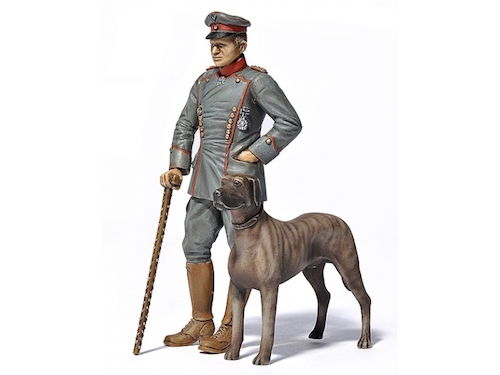
They were called “novelty” songs – comical or non-sensical songs that usually reflected current events, cultural fads, or parodies of established hit songs. The rock group, the Royal Guardsman, had created just such a song.
They didn’t see much success with their first single “Baby Let’s Wait,” but their second single, “Snoopy vs. The Red Baron” was big hit. The song was released in 1966, and by 1967, it had hit #2 on the U.S. Billboard Hot 100, #6 in the U.K., and #1 in Australia. It sold more than one million copies and earned an RIAA gold record.
The song described a fictional encounter between First World War ace pilot Baron von Richthofen, and the iconic Snoopy who, in his Walter Mitty moments,” saw himself as a World War I Flying Ace. You can hear it below, and be sure to listen for Richthofen’s name because he is the subject of this post:
Snoopy’s creator, Charles M. Schulz, and United Features Syndicate sued The Royal Guardsmen (and won) because the Royal Guardsmen had never asked for permission or secured an advertising license to use Snoopy. Publishing revenues of the song went to Schulz and UFS, but later, the plaintiff did give the Guardsmen consent to write more Snoopy-featured songs.
About Baron von Richthofen: Known as the Red Baron, von Richthofen began his military career as a cavalry officer in the Prussian army, but when the machine gun changed how wars were fought, he turned to the air. After only 24 hours of instruction, he made his first solo flight, and would go on to shoot down 80 allied planes in combat. He was a cool and calculating pilot, if not a flamboyant one: His success in the air, along with his brightly red painted plane, a Fokker DR-1 Dridecker, led to his nicknames: Der Rote Kampfflieger by the Germans, le petit rouge by the French, and the Red Baron by the British.
He was killed in the sky over Vaux-sur Somme in 1918 at the age of 25, and came to be regarded as a national hero in Germany. Even his enemies had respected his skill. Two years before his death, this photograph was taken of him petting “Moritz,” a Great Dane he had bought from a farmer in Flanders. Some sources indicate that Moritz was a mix, but Richthofen himself wrote, “The most beautiful creature ever created is my elm-colored Great Dane, my ‘little lap dog’—Moritz.” He slept in bed with me and was very well trained…. I even took him up with me once…. He behaved very sensibly and eyed the world with interest from above.”
“Moritz” often accompanied his owner on flights, and in fact, Moritz was “co-pilot” during many of Richthofen’s most important victories. The Red Baron usually took Moritz with him on social outings, and it’s said that it wasn’t unusual for him to share a beer with the dog.
The baron often wrote about Moritz:
“Moritz is more than a year old and he is still as child-like as if he were still in his teens. He is very fond of playing billiards. In doing this he has destroyed many billiard balls and particularly many a billiard cloth. He has a great passion for the chase. My mechanics are highly satisfied with his sporting inclinations for he has caught for them many a nice hare. I do not much approve of his hunting proclivities. Consequently he gets a whacking if I catch him at it.
“He has a silly peculiarity. He likes to accompany the flying machines at the start. Frequently the normal death of a flying-man’s dog is death from the propeller. One day he rushed in front of a flying-machine which had been started. The aeroplane caught him up and a beautiful propeller was smashed to bits. Moritz howled terribly and a measure which I had hitherto omitted was taken. I had always refused to have his ears cut. One of his ears was cut off by the propeller. A long ear and a short ear do not go well together.
“Moritz has taken a very sensible view of the world-war and of our enemies. When in the summer of 1916 he saw for the first time Russian natives—the train had stopped and Moritz was being taken for a walk—he chased the Russian crowd with loud barking. He has no great opinion of Frenchmen although he is, after all, a Belgian. Once, when I had settled in new quarters, I ordered the people to clean the house. When I came back in the evening nothing had been done. I got angry and asked the Frenchman to come and see me. When he opened the door Moritz greeted him rather brusquely. Immediately I understood why no cleaning had been done.”
“The Red Baron’s Last Flight” by authors Norma Franks and Alan Bennet suggests that after the baron’s death, Moritz was adopted by Lieutenant Alfred Gerstenberg, a former pilot in Jasta 11 who took him home to his farm. Many years later, Moritz died of old age.
Image: The thumbnail image is a plastic model of the Red Baron with Moritz. It’s available for purchase here.
